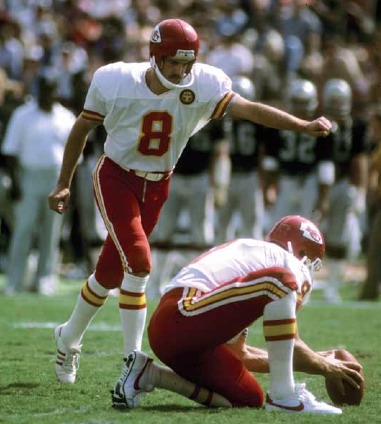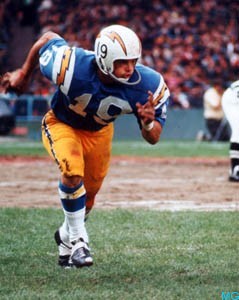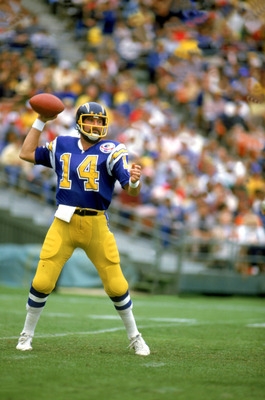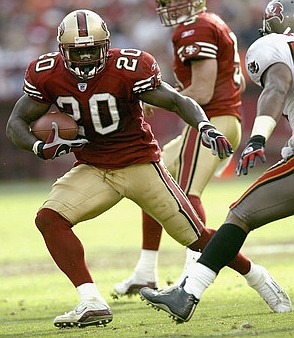
Straight cash, homey.
In 1998, 21-year-old
Randy Moss made a stunning NFL debut, racking up 17 touchdowns and 1,260
True Receiving Yards, the 2nd-best total in football that season. The Vikings’ primary quarterback that year,
Randall Cunningham, was a former Pro Bowler and MVP, but all that seemed like a lifetime ago before the ’98 season. He’d been out of football entirely in 1996, and in 1997 he posted an
Adjusted Net Yards per Attempt average that was 1.2 points
below the league’s average (for reference’s sake, replacement level is usually around
0.75 below average). With Moss in ’98, though, Cunningham’s passing efficiency numbers exploded: he posted a career best +3.2
Relative Adjusted Net Yards per Attempt, miles ahead of his perfectly-average overall career mark. If we
adjust for the fact that Cunningham was also 35 at the time (an age at which quarterbacks’ RANY/A rates tend to be
1.1 points below what they are at age 27), Cunningham’s 1998 rate was actually 4.3 points better than we’d expect from the rest of his career, a staggering outlier.
The following year, Jeff George took over as the Vikings primary quarterback, and he promptly posted a Relative ANY/A 2.2 points higher than expected based on his age and the rest of his career. George left Moss and Minnesota after the season, and he would throw only 236 passes the rest of his career, producing a cumulative -0.6 RANY/A in Washington before retiring.
From 2000-04, Moss was the primary target of Daunte Culpepper, whose RANY/A was 0.7 better than expected (based on Culpepper’s career numbers) when Moss was around. Although he’d enjoyed one of the best quarterback seasons in NFL history in 2004, Culpepper was never the same after Moss was traded to Oakland; in fact, he never even had another league-average passing season, producing a horrible -1.2 RANY/A from 2005 until his retirement in 2009.
Moss’s stint with the Raiders was famously checkered — although Kerry Collins’ RANY/A was 0.6 better than expected in 2005, Aaron Brooks played 2.5 points of RANY/A below his previous standards in 2006 — but we all know what happened when he joined the Patriots in 2007. With Moss, Tom Brady’s RANY/A was a whopping 1.3 points higher than expected from the rest of his career, and Moss also played a big role in Matt Cassel’s RANY/A being +1.0 relative to expectations after Brady was lost for the season in 2008.
While Moss’s post-Pats career hasn’t exactly been the stuff of legends, the majority of his career (weighted by True Receiving Yards) saw him dramatically improve his quarterbacks’ play relative to the rest of their careers. In fact, his lifetime WOWY (With or Without You) mark of +1.1 age-adjusted RANY/A ranks 3rd among all receivers who: a) had at least 3,000 career TRY, b) started their careers after the merger, and c) played exclusively with quarterbacks who started their careers after the merger. And the first two names on the list are possibly explained by other means. The table below lists all 301 receivers with 3,000 career TRY. The table is fully sortable and searchable, and you can click on the arrows at the bottom of the table to scroll. The table is sorted by the QB WOWY column.
[continue reading…]
 We’ve come to the end of the line. After several posts ranking and reranking, thinking and rethinking, quarterbacks with Total Adjusted Yards per Play and its descendants, this is the one I imagine most readers really want to see. Today, we are looking at measured performance in the regular season and playoffs combined. This is where guys like Y.A. Tittle, who feasted in the regular season but nearly always faltered in the postseason, see their positions fall down the list. Where passers like Jim Plunkett, whose regular season performances left much to be desired but went full tilt bozo in the playoffs, rise up the ranks. As far as the NFL record book is concerned, the playoffs don’t count toward career stats or win-loss totals. While I understand not rewarding players for getting to participate in more games, I can see the argument that it is equally unfair not to reward them for playing well enough to continue the march toward a championship. In order to balance those ideas, I have only counted playoff performances that measured above average by TAY/P.
We’ve come to the end of the line. After several posts ranking and reranking, thinking and rethinking, quarterbacks with Total Adjusted Yards per Play and its descendants, this is the one I imagine most readers really want to see. Today, we are looking at measured performance in the regular season and playoffs combined. This is where guys like Y.A. Tittle, who feasted in the regular season but nearly always faltered in the postseason, see their positions fall down the list. Where passers like Jim Plunkett, whose regular season performances left much to be desired but went full tilt bozo in the playoffs, rise up the ranks. As far as the NFL record book is concerned, the playoffs don’t count toward career stats or win-loss totals. While I understand not rewarding players for getting to participate in more games, I can see the argument that it is equally unfair not to reward them for playing well enough to continue the march toward a championship. In order to balance those ideas, I have only counted playoff performances that measured above average by TAY/P.











